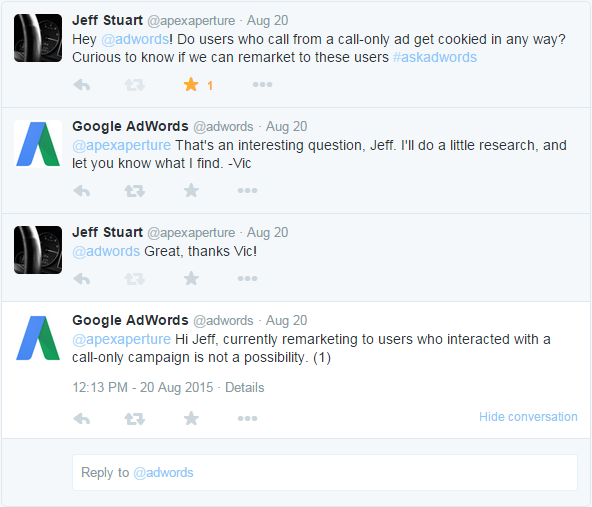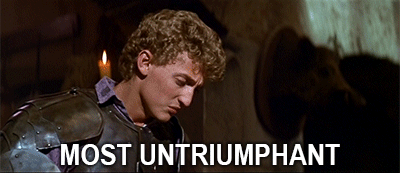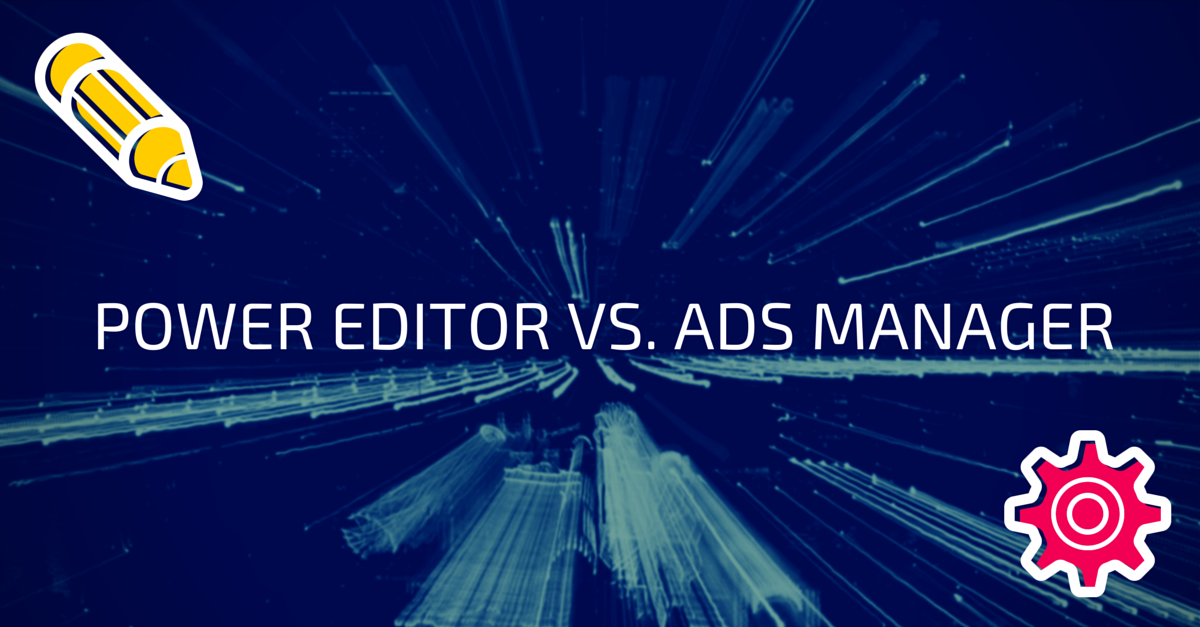Call-Only Converters: The Moving (Re-)Target
Let’s Chat
Call-only campaigns, along with call extensions, have become the premier conversion tools for a whole swath of industries that use PPC to augment their marketing efforts. Many right-now businesses such as auto repair facilities, banking institutions and more have become a whole new subject of marketing focus, one that Google calls micro-moments. Search for what you need right now (oil change, wire transfer), find an ad that offers the service in your area, make the call. Converted, yes, but what happens to these users after they make the call?
Sure, some might have treated their vehicle to a fresh change of synthetic or were able to make their wire transfer to fulfill a down payment deadline. But what if they didn’t do, or weren’t able to accomplish, these things? What if they were more concerned about wait times, or what if their institution didn’t fulfill those services over the phone?
Thought Explosion
Right around the time that call-only campaigns were introduced, I had an idea about how to generate even more value from these sorts of users. The PPC marketer’s first thought naturally leads them down the path of remarketing, which is one of the most powerful tools in any digital marketer’s arsenal. The question was how?
I jumped on the internet in the search of knowledge, and queried if remarketing was even possible from call-only or calls from ads-type converters. The internet returned the visual equivalent of crickets. Off to the twitternet I went, and gave a holler to the AdWords folks hoping for some super-secret functionality that had been overlooked by all of PPCdom.
Most Untriumphant
Nope, this was not to be the case. As it turns out, mobile users are not cookied when they interact with a call-only ad (I can only assume that the same scenario plays out when a user interacts with an ad with call extensions enabled). Frankly, I’m surprised that Google hasn’t found a way to make the micro-moment happen while simultaneously allowing advertisers to re-target that user in some shape or form later on down the road. I think a micro-moment remarketing list could be an interesting audience to test, perhaps someday this will be a possibility.
So now comes the question of how to best utilize this campaign type, and how to decide if a phone call now is better than a remarketing or site-driven conversion later. I’ve broken down a few different hypothetical companies to help illustrate when a call-only campaign could be useful, and to what sort of business or advertiser.
Scenario Time
Let’s say we have 3 types of businesses who all advertise on Google and all are desperately seeking customers (what business isn’t I guess?). The first is a locksmith, the second is an auto dealership and the third is an enterprise IT solutions provider. The objective of this scenario is to help understand what sorts of advertisers might benefit from call-only campaigns, and who might want to reconsider their use.
Pickings Locksmith Company
Let’s start with a local locksmith. This business encounters customers that literally come flying out of nowhere, and are generally desperate for their services. Whether they’re locked out of their car, had a break-in, or broke their key off in their deadbolt that one time after coming home from work, after picking up some wine, and were very much looking forward to drinking it (that last thing, it wasn’t me. Except it was). Anyway, so we have an incredibly motivated searcher who doesn’t give a dang who he or she calls, just so long as they can get back to their life (and wine). Remarketing would be less than useless, and having the user click-through to your site to get a contact phone number won’t net you many (distressed) phone calls.
Conclusion: This sort of customer is the poster child for the micro-moment, and the locksmith would do well to utilize call-only campaigns to reach these types of users.
Fair Shake Auto Mall
This auto dealer consortium sells cars and trucks that encompass many makes and models, from domestic to import, sub-compact to land yacht, new and gently used. Many of the customers who visit their site are internet-window shoppers who are primarily interested in getting an idea for the type of vehicle they want, the prices they can afford and the features they must have. Anecdotal and crowd-sourced evidence points to vehicle sales taking place on the lot, or in the sales manager’s office and rarely, if ever, over the phone. A call to Fair Shake might be purely out of research, or it could be a call asking for directions, or some other non-value related topic. The dealership might want to consider traditional text or image-based ads, thereby allowing the users to visit their site and browse their inventory. Additionally, following their visit, the dealership can remarket to these users as they continue their path down the buying cycle, with this dealer’s ads following them around as they go with the potential of influencing not necessarily what make or model they purchase, but who they purchase from.
Conclusion: A call-only campaign might generate a lot of phone calls, but these have less likelihood of turning into a vehicle sale. Remarketing is key here, so getting users to their site could prove much more valuable.
IDDQD IT Inc.
This nationally-recognized company is a leader in providing IT solutions for medium to large businesses. Their range of products and services is a challenge for any rookie salesperson to recite, while their competition is equally fierce. Their funnel involves several qualifying steps to help new customers narrow down the types of services that IDDQD provides. On the other end, purchasing managers and lead buyer-types require immense oversight in the acquisition of new technology vendors, making the sales process somewhat long, complicated and a bit bureaucratic. The customer needs to be sold by the reputation of the company, indoctrinated by it’s branding, mission and core values, and requires significant amounts of negotiation in order to sign on the dotted line.
Conclusion: This company is a good fit for display and traditional search, but would likely see much less benefit from utilizing call-only campaigns. The calls it would receive, like the dealership scenario, would most likely be relegated to fact-finding conversations, rather than interactions that would result from a sale.
The Concluding Conclusion
While Google is touting this new campaign type as a boon for advertisers, the fact is that only certain types of advertisers, or even entire industries, are poised to reap the benefits from these highly-motivating ads. Some companies rely on customers with a prolonged, if not methodical, research phase before actually converting while others are hyper-motivated to convert, and would’ve converted yesterday had their not have been space-time limitations. Determining if your typical customer falls into one of these two camps, or perhaps a hidden third, is the key in deciding whether or not call-only campaigns are right for you.
I would love to hear about your experiences with this campaign type! What’s worked for you? What are some of the obstacles you had to overcome in order to achieve success with this campaign type? Leave a comment below!
Jeff Stuart
Recent Posts
Recent Comments
- Shannon Thammasiene on How to Create a Successful Blog
- Sarah on How to Create a Successful Blog
- How to Create a Successful Blog on 5 Free Keyword Research Tools that will Rock your Socks
- Olivier Hamphrey on This Week In Social Media
- Richard Dickerson on Use Email to Sell without Selling






